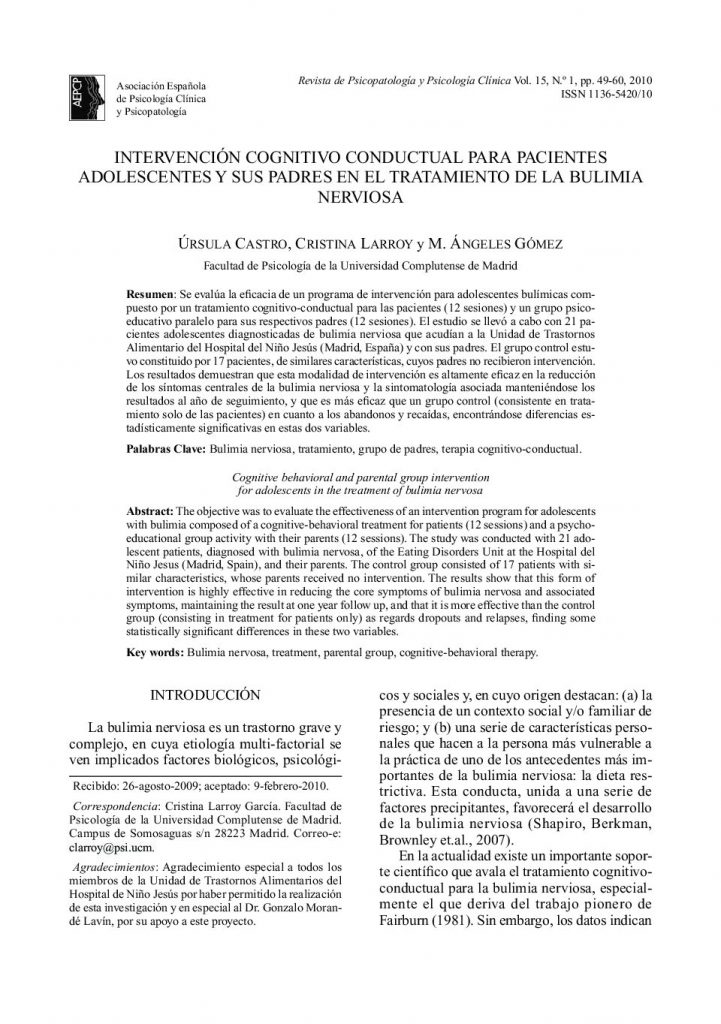Intervención cognitivo conductual para pacientes adolescentes y sus padres en el tratamiento de la bulimia nerviosa.

- La empatía psicoterapéutica y su evaluación: Una revisión.
- Internet y psicología clínica: Revisión de las ciber-terapias.
- Relaciones entre síntomas positivos y sensibilidad a la ansiedad en la psicosis.
- Intervención cognitivo conductual para pacientes adolescentes y sus padres en el tratamiento de la bulimia nerviosa.
- Terapia dialéctica comportamental (DBT) en un caso con rasgos de personalidad límite y trastorno de la conducta alimentaria.
- J. Moix y F.M. Kovacs (Eds.). (2009): Manual del dolor. Tratamiento cognitivo conductual del dolor crónico. Barcelona: Paidós.
- M. Hardcastle, D. Kennard, S. Grandison, y L. Fagin, (Eds.) (2009): Experiencias en la atención psiquiátrica hospitalaria. Barcelona: Herder.
The objective was to evaluate the effectiveness of an intervention program for adolescents with bulimia composed of a cognitive-behavioral treatment for patients (12 sessions) and a psychoeducational group activity with their parents (12 sessions). The study was conducted with 21 adolescent patients, diagnosed with bulimia nervosa, of the Eating Disorders Unit at the Hospital del Niño Jesus (Madrid, Spain), and their parents. The control group consisted of 17 patients with similar characteristics, whose parents received no intervention. The results show that this form of intervention is highly effective in reducing the core symptoms of bulimia nervosa and associated symptoms, maintaining the result at one year follow up, and that it is more effective than the control group (consisting in treatment for patients only) as regards dropouts and relapses, finding some statistically significant differences in these two variables.
Se evalúa la eficacia de un programa de intervención para adolescentes bulímicas compuesto por un tratamiento cognitivo-conductual para las pacientes (12 sesiones) y un grupo psicoeducativo paralelo para sus respectivos padres (12 sesiones). El estudio se llevó a cabo con 21 pacientes adolescentes diagnosticadas de BN que acudían a la Unidad de Trastornos Alimentario del Hospital del Niño Jesús (Madrid, España) y con sus padres. El grupo control estuvo constituido por 17 pacientes, de similares características, cuyos padres no recibieron intervención. Los resultados demuestran que esta modalidad de intervención es altamente eficaz en la reducción de los síntomas centrales de la bulimia nerviosa y la sintomatología asociada manteniéndose los resultados al año de seguimiento, y que es más eficaz que un grupo control (consistente en tratamiento solo de las pacientes) en cuanto a los abandonos y recaídas, encontrándose diferencias estadísticamente significativas en estas dos variables.



